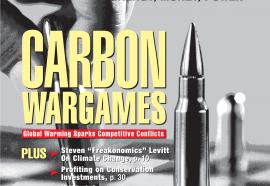Transmission Tug-of-War
From EPAct to Order 1000, siting authority continues evolving.
Six years after Congress granted FERC “backstop” siting authority for electric transmission projects in the Energy Policy Act of 2005, the regulatory landscape is still evolving as a result of federal court decisions and new FERC orders. But despite a lack of certainty at the federal level, project sponsors have filed numerous applications at the state level for new transmission projects. Can these projects proceed without greater certainty at FERC?










